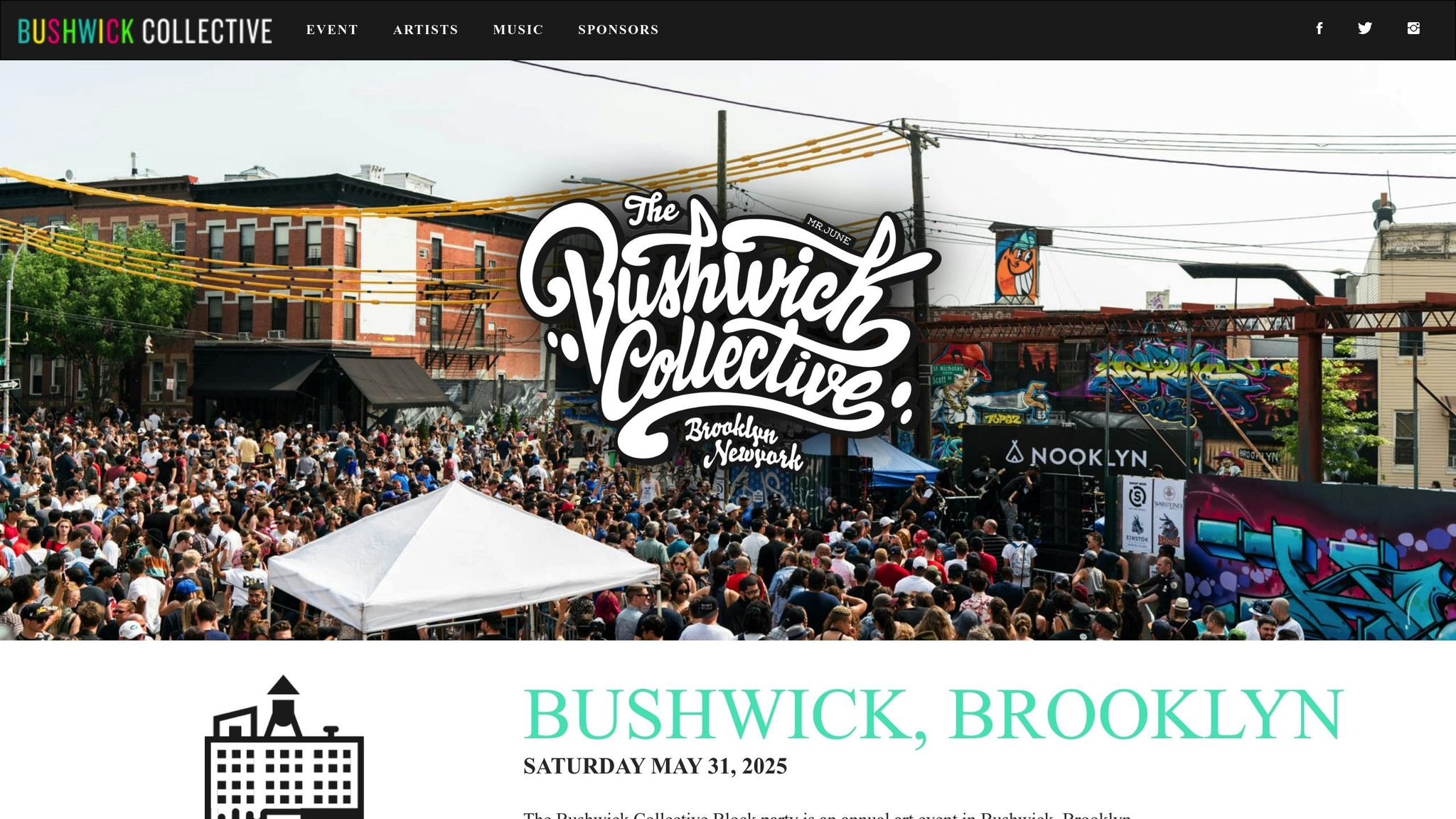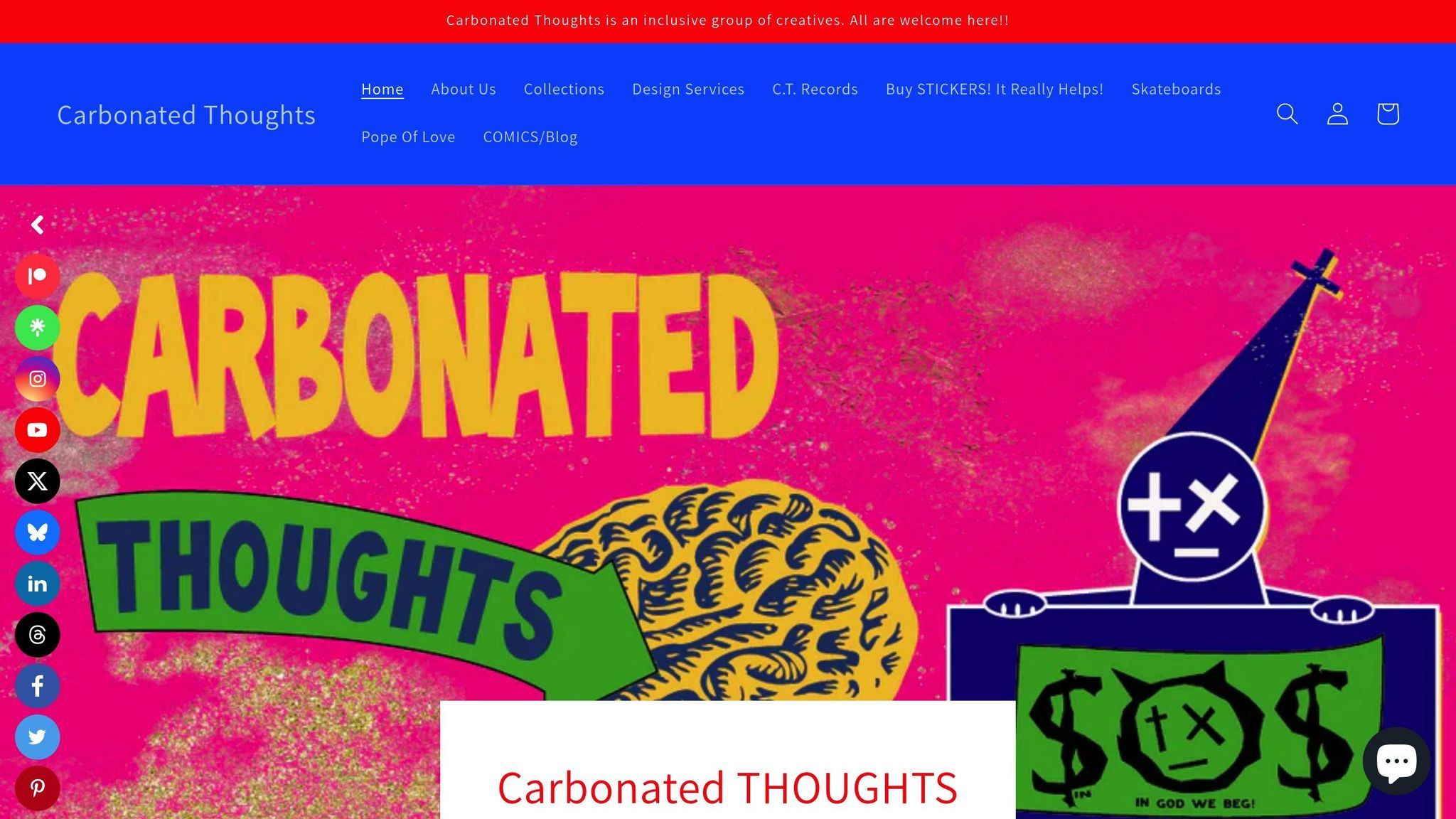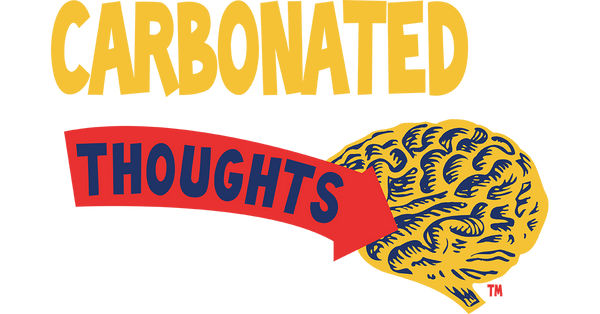
Interactive Urban Art: Engaging Communities
Share
Interactive urban art transforms public spaces by inviting active participation rather than passive observation. It uses technology like motion sensors, augmented reality (AR), and community voting apps to create dynamic, personalized experiences. These projects bring communities together, improve public sentiment, and even reduce crime in some areas.
Key Takeaways:
- What It Is: Art that changes based on audience interaction (e.g., motion, sound, AR).
- Benefits: Increases engagement by 50%, boosts well-being for 84% of participants, and strengthens community pride.
-
Examples:
- Philadelphia’s Pockets of Light: Interactive sculptures with environmental education.
- Turin’s UFO Project: Drones painting community-submitted designs.
- Bushwick Collective: Murals fostering neighborhood connection.
- Technology Used: Motion-based lighting, AR-enhanced murals, and real-time voting apps.
-
Challenges & Solutions:
- Accessibility: Use tactile maps, audio descriptions, and high-traffic locations.
- Funding: Combine grants, public-private partnerships, and participatory budgeting.
- Vandalism: Anti-graffiti coatings, community involvement, and smart tech.
Quick Comparison:
| Aspect | Traditional Public Art | Interactive Urban Art |
|---|---|---|
| Viewer Role | Passive observation | Active participation |
| Art Response | Static, unchanging | Dynamic, adapts to input |
| Technology Integration | Minimal or none | Often incorporates digital tools |
| Experience Type | Same for all | Unique for each individual |
Interactive urban art is reshaping how we connect with public spaces, blending creativity, technology, and community engagement to create meaningful experiences.
Art in Motion: Exploring Interactive Street Art Installations
Current Community Art Projects
Interactive urban art is flourishing, fueled by community-led efforts that reimagine public spaces in creative and meaningful ways.
Bushwick Collective Murals

The Bushwick Collective, founded in 2012 by Joseph Ficalora, has turned the streets of Brooklyn into a vibrant, ever-changing gallery. This initiative not only adds color to the neighborhood but also serves as a platform for community healing and beautification. What started as 85 open studios in 2006 expanded to 161 locations by 2011. Each year, the project hosts a Block Party featuring artists, DJs, and community chalk art, bringing people together through creativity.
"to bring art to the streets as a form of community healing and beautification" – Joseph Ficalora, Founder of the Bushwick Collective
Across cities, similar projects are using interactive art to transform urban landscapes into spaces of connection and expression.
Philadelphia's Pockets of Light
In 2023, artists Julie Woodard and Eric Dale unveiled "Pockets of Light", an innovative series of installations along Philadelphia's Delaware River Waterfront. These installations feature sculptures made from post-consumer plastic, creatively reimagining native plants like Echinacea and Rudbeckia.
"We're highlighting nature through something that is not natural, and by repurposing these materials into something beautiful, we hope to attract you to the interactive learning components." – Julie Woodard
The project invites visitors to engage with QR-activated puzzles and scavenger hunts, blending exploration with environmental education. Efforts like these have proven to have a broader impact on urban areas; for instance, similar initiatives in Philadelphia reduced overall crime by 9.2% and gun assaults by 5.8% over three years.
Turin's Digital Graffiti Project
In Turin, Italy, the UFO-Urban Flying Opera combined cutting-edge technology with community art in June 2019. Using drones, this project brought over 1,000 community-submitted designs to life as a collaborative mural.
| Project Details | Statistics |
|---|---|
| Mural Size | 46 x 39 feet |
| Number of Drones | 4 UAVs |
| Paint Used | 2,034 feet |
| Community Submissions | Over 1,000 |
| Selected Designs | ~100 |
| Duration | 2 days |
"The city is an open canvas, where people can inscribe their stories in many ways. Such processes have always been happening; however, with UFO we tried to accelerate them, using drone technology to allow for a new use of painting as a means of expression." – Professor Carlo Ratti, Founder of CRA practice and director of the Senseable City Lab at the Massachusetts Institute of Technology (MIT)
A centralized system coordinated the drones in real time, turning the community's submissions into a massive, collaborative work of art. This project demonstrates how technology can amplify communal storytelling and creativity.
Tech Tools in Urban Art
Technology is reshaping urban art, turning static spaces into immersive and interactive experiences. By integrating tools like augmented reality (AR), community voting apps, and motion-based installations, urban art is evolving to engage audiences in new and exciting ways.
AR in Public Art
Augmented reality (AR) has brought murals and sculptures to life, turning them into dynamic pieces that tell a story. By scanning these artworks with a smartphone, viewers can unlock animations, artist interviews, and historical background, adding depth to the visual experience.
One example is the Albertina Museum's partnership with Artivive, which transforms traditional static art into vibrant, animated scenes accessible through smartphones.
The impact of AR in urban art is clear in the numbers:
| Metric | Impact |
|---|---|
| Social Media Impressions | 4.7x higher than traditional billboards |
| Social Sharing | 342% increase compared to standard installations |
| Engagement Duration | Over 30 seconds (10 times the traditional attention span) |
Source:
While AR enhances storytelling, digital platforms are giving communities a voice in the creation of urban art.
Community Voting Apps
Digital tools are making the art selection process more inclusive. Platforms like Street Art Cities highlight this shift by introducing a voting system in 2026, where artists must maintain verified profiles to submit their work. In just February 2025, the platform facilitated votes on 71 submissions spanning 21 countries and 49 cities.
The 4th Wall app takes this concept further by linking public voting to real-time changes in art. In West Hollywood, the "Body Politic" project allows users to vote on human rights topics, instantly altering the AR animations displayed on a public billboard.
"People engaging on the artist's 4th Wall app will witness their votes – their prioritization of human rights – changing the constitutive elements of the artwork in real time." - Nancy Baker Cahill
These tools are not just about voting; they’re about creating a shared sense of ownership and connection to public art.
Motion-Based Art
Motion-sensitive installations are turning urban spaces into interactive hubs. A 2022 study by the Urban Arts Initiative revealed that kinetic art increased foot traffic by 38% in underused areas, with 72% of visitors feeling a stronger connection to their community.
Philadelphia’s SRT LED project uses sensors to activate lighting along the Schuylkill River Trail at dusk, creating a responsive and visually engaging environment.
"Kinetic art bridges the gap between static form and living environment, inviting people to co-create moments of wonder." - Dr. Elena Torres, Urban Design Researcher
Similarly, the Orlando International Airport’s "Moment Vault" uses AI-driven motion capture to blend passenger silhouettes with dynamic LED screen content, offering a 360-degree immersive experience.
These innovations are not just transforming how we view art but also how we interact with and become part of it.
Common Issues and Solutions
Interactive urban art holds immense potential, but it does come with its share of challenges. To make a lasting impact on communities, these hurdles need thoughtful solutions. Let’s dive into some common obstacles and practical ways to address them.
Making Art Accessible
Physical and social barriers often prevent full community participation in urban art projects. For example, the 2023 STEPS Public Art initiative in Toronto tackled this by incorporating audio narratives and tactile maps to engage visually impaired participants.
Here are some ways to make art more inclusive:
| Approach | Implementation | Impact |
|---|---|---|
| Digital Integration | QR codes linking to audio descriptions | Improves engagement for all |
| Multi-sensory Elements | Tactile surfaces and sound installations | Expands accessibility |
| Location Planning | Placing art in high-traffic areas | Boosts visibility |
Project Funding Methods
Finding sustainable funding can be tricky. Successful projects often rely on a mix of resources, such as percent-for-art ordinances, public-private partnerships, foundation grants, and participatory budgeting. A great example is Transit Drives Indy's 3C Indy project, which blended transportation grants with arts council support to bring interactive installations to bus rapid transit lines.
"Creative tools can strengthen the understanding and exploration of community values." – Julie Burros, former Chief of Arts and Culture for the City of Boston
Reducing Vandalism
Keeping interactive installations safe from vandalism, while still making them accessible, is a balancing act. Interestingly, involving the community itself can be an effective deterrent. One medical center, for instance, planted blackberry bushes along a frequently vandalized wall, which not only discouraged graffiti but also made the space more inviting.
Some strategies to protect urban art include:
| Strategy | Method | Impact |
|---|---|---|
| Design Elements | Anti-graffiti coatings and textured surfaces | Discourages tagging |
| Community Engagement | Involving local artists in creation and upkeep | Builds a sense of ownership |
| Smart Technology | Motion-sensitive lighting and surveillance | Acts as a deterrent |
"More than ever before, public artworks are stimulating and inviting active dialogue rather than just passive observation, thereby fostering social interaction that can even lead to a sense of social cohesion among the viewers"
These examples highlight the importance of addressing challenges thoughtfully to ensure creative projects thrive.
sbb-itb-e116ef9
Carbonated Thoughts Services

Carbonated Thoughts is making waves in the world of interactive urban art, offering products and services designed to fuel creativity and transform public spaces.
Art Tools and Resources
To support artists, Carbonated Thoughts provides a range of tools perfect for creating interactive urban art. Their product lineup includes customizable skateboards, eco-friendly apparel, and stickers - each designed to inspire and promote artistic expression.
| Resource Type | Price Range | Applications |
|---|---|---|
| Skateboards | $69.99–$79.99 | Mobile art canvases, interactive displays |
| Eco T-shirts | From $21.50 | Event uniforms, project merchandise |
| Premium Eco Hoodies | From $64.00 | Community outreach, team gear |
| Stickers | $5.20–$7.00 | Public art elements, promotional materials |
These tools not only serve as creative outlets but also help artists connect with their communities in unique and meaningful ways.
Artist Development
Carbonated Thoughts doesn’t stop at providing resources - they also invest in artist growth. They offer consulting sessions at $30 per hour, helping artists design concepts that resonate with their audiences. For those seeking a deeper dive into project planning and community engagement, business consulting is available at $100 per hour.
"Carbonated Thoughts is a platform for the intersection of art, skateboarding, and streetwear. We are committed to promoting inclusivity and treating everyone with respect, love, and kindness, regardless of their background or identity. Join us in celebrating fun, art, and creativity for all."
Research highlights the power of creative placemaking: spaces with art interventions see a 50% increase in visitor time, a 77% rise in people sharing information about the location, and a 63% boost in positive feelings about the environment.
Social Impact Projects
Beyond art, Carbonated Thoughts is committed to making a difference through social and environmental initiatives. Their tree planting program, where one tree is planted for every skateboard sold, is a standout effort in green development. They also lead community art projects, bringing people together to create vibrant public spaces.
| Initiative Type | Implementation | Community Benefit |
|---|---|---|
| Environmental | Tree planting program | Green space development |
| Community Art | Collaborative projects | Enhanced public spaces |
Data shows that 65% of consumers are more likely to visit and spend money at venues offering exceptional experiences. Carbonated Thoughts’ projects not only enhance the environment but also foster stronger, more connected communities - blending creativity with meaningful impact.
Looking Ahead
Urban art is stepping into a new era, shaped by advancing technology and stronger community ties. As these elements come together, digital trends are reshaping how urban art is created, experienced, and preserved.
Technology is changing the way people engage with urban art. Tools like augmented reality (AR) and interactive installations are creating new ways to experience art by blending the physical with the digital. A great example is the Boa Mistura collective in Madrid and their "Reversus Project", which transformed a mural into 35 digital fragments, offering a fresh perspective on how art can exist in both worlds.
| Technology | Impact on Urban Art | Community Benefit |
|---|---|---|
| AR/VR | Immersive experiences | Broader access to art |
| Digital Twins | Preservation of urban heritage | Opportunities for virtual experimentation |
| NFTs | New ways to distribute art | Financial support for artists |
| Interactive Tech | Real-time audience interaction | Greater community involvement |
The "Murals for Communities" initiative is another powerful example of how urban art connects people. Between 2019 and 2020, this project brought together three cities, hosting 54 workshops and creating 18 murals. It emphasized how art can play a role in sustainable urban development.
Crowdfunding is also proving to be a game-changer for urban art. In 2023, Rogers City's art studio committee raised $50,000 for their mural festival. Impressively, 60% of the funds came from small donations under $500, highlighting the strong grassroots support for public art.
Sustainability is becoming a key focus in urban art. Artists and communities are turning to eco-friendly materials and practices, while digital preservation efforts ensure that urban art and its heritage are safeguarded for future generations.
Studies show that urban art has a powerful cultural and social impact, with 85% of focus group participants expressing positive views about its role in their communities. The combination of cutting-edge technology and community-driven efforts is paving the way for a more inclusive and dynamic future for urban art.
FAQs
How does interactive urban art benefit communities and help reduce crime?
Interactive urban art has a way of bringing people together and creating stronger ties within communities. When residents get involved in crafting public art, it deepens their connection to the area. This shared effort often leads to a sense of pride and belonging, making neighborhoods feel safer and more inviting. Plus, when people feel a sense of ownership over these spaces, they’re less likely to tolerate vandalism or other harmful activities.
Beyond fostering pride, colorful public art can breathe new life into overlooked or underused areas. It turns them into vibrant spots for socializing and collaboration. These projects not only beautify neighborhoods but also encourage people to connect and work together, strengthening the overall sense of unity. By creating spaces where everyone feels included and valued, interactive urban art plays a key role in improving community well-being while also helping to reduce crime.
How does technology enhance interactive urban art and engage communities?
How Technology Transforms Urban Art into an Interactive Experience
Technology has become a game-changer in bringing urban art to life, making it more dynamic and engaging for communities. Take augmented reality (AR) murals, for instance. With just a smartphone, viewers can see digital elements seamlessly layered over physical artwork, creating a fascinating mix of the tangible and the virtual.
Another standout is projection mapping, where artists project vivid animations onto buildings. Often, these displays are interactive, responding to movements or input from the audience, adding an extra layer of excitement.
Then there are touch-sensitive murals and motion-activated displays, which take things a step further by inviting people to actively engage with the art. Instead of just observing, participants become part of the creative process, turning public spaces into collaborative experiences.
These technologies do more than just enhance the visual appeal - they build deeper connections between artists and the communities they aim to inspire.
What are the main challenges faced by interactive urban art projects, and how are they being addressed?
Interactive urban art projects often come with their fair share of challenges. The temporary nature of the artwork, navigating legal red tape to secure permissions, and risks like vandalism or weather damage can all make it tough to preserve these pieces and sustain their impact in the community.
To tackle these hurdles, some inventive approaches are emerging. For starters, high-resolution photography and 3D scanning are being used to document and preserve these works, ensuring they can live on even after their physical forms fade. Community involvement is another powerful tool - when local residents are invited to help create and maintain the art, it fosters a stronger connection and sense of ownership. On the tech side, augmented reality (AR) and NFTs are stepping in to reimagine how people interact with urban art. These digital tools not only make the art more engaging and interactive but also help ensure its accessibility and longevity, breathing fresh energy into public spaces.
